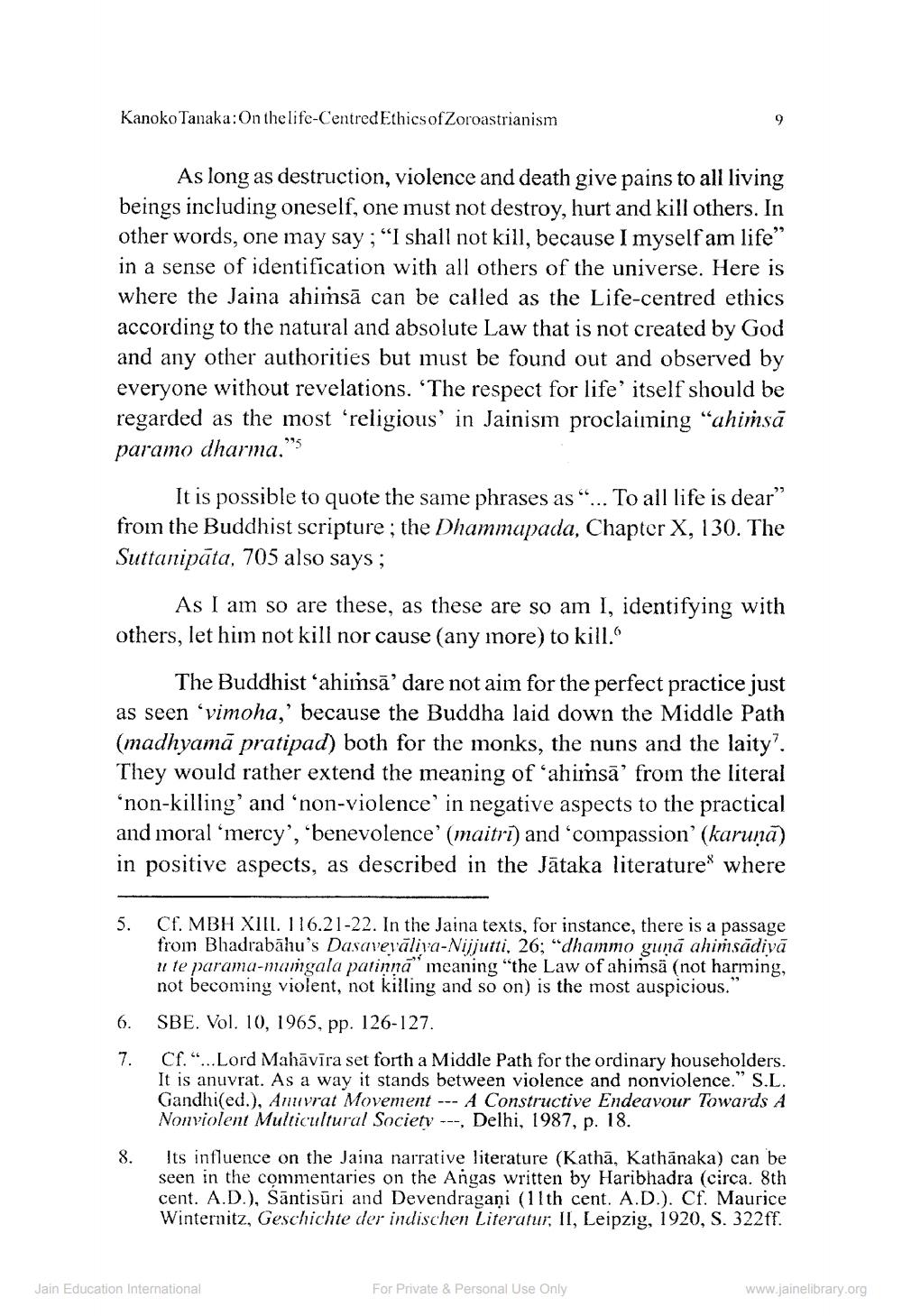________________
Kanoko Tanaka:On the life-Centred Ethics of Zoroastrianism
As long as destruction, violence and death give pains to all living beings including oneself, one must not destroy, hurt and kill others. In other words, one may say ; “I shall not kill, because I myself am life" in a sense of identification with all others of the universe. Here is where the Jaina ahimsā can be called as the Life-centred ethics according to the natural and absolute Law that is not created by God and any other authorities but must be found out and observed by everyone without revelations. The respect for life' itself should be regarded as the most 'religious' in Jainism proclaiming “ahimsā paramo dharma."
It is possible to quote the same phrases as “... To all life is dear” from the Buddhist scripture; the Dhammapada, Chapter X, 130. The Suttanipāta, 705 also says;
As I am so are these, as these are so am I, identifying with others, let him not kill nor cause (any more) to kill.
The Buddhist ‘ahiṁsā' dare not aim for the perfect practice just as seen ‘vimoha,' because the Buddha laid down the Middle Path (madhyamā pratipad) both for the monks, the nuns and the laity". They would rather extend the meaning of 'ahimsā' from the literal ‘non-killing' and 'non-violence'in negative aspects to the practical and moral ‘mercy', 'benevolence' (maitrī) and compassion' (karunā) in positive aspects, as described in the Jātaka literature where
5. Cf. MBH XIII. 116.21-22. In the Jaina texts, for instance, there is a passage
from Bhadrabāhu's Dasavevāliva-Nijjutti, 26; "dhammo gunā ahimsādivā u te parama-mangala patinnā" meaning "the Law of ahissä (not harming,
not becoming violent, not killing and so on) is the most auspicious. 6. SBE. Vol. 10, 1965, pp. 126-127.
Cf."... Lord Mahāvīra set forth a Middle Path for the ordinary householders. It is anuvrat. As a way it stands between violence and nonviolence." S.L. Gandhi(ed.), Anvrat Movement --- A Constructive Endeavour Towards A Nonviolent Multicultural Society ---, Delhi, 1987, p. 18.
8.
Its influence on the Jaina narrative literature (Kathā, Kathānaka) can be seen in the commentaries on the Angas written by Haribhadra (circa. 8th cent. A.D.), Sāntisūri and Devendragani (11th cent. A.D.). Cf. Maurice Winternitz, Geschichte der indischen Literatur, II, Leipzig, 1920, S. 322ff.
Jain Education International
For Private & Personal Use Only
www.jainelibrary.org




